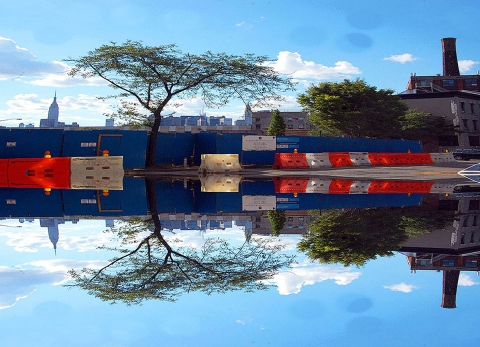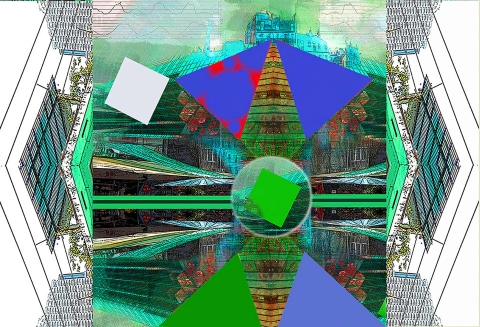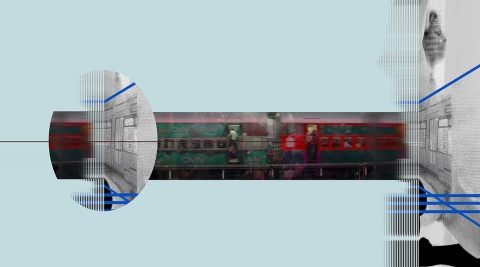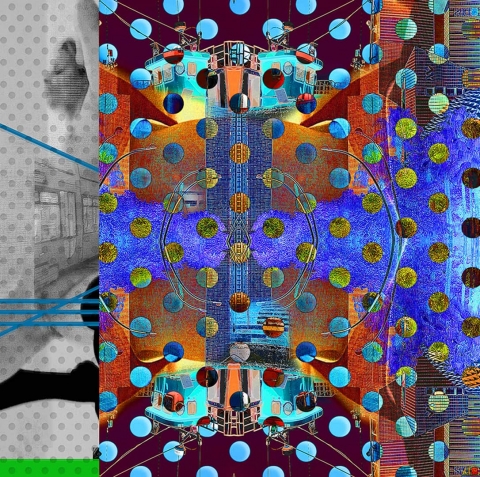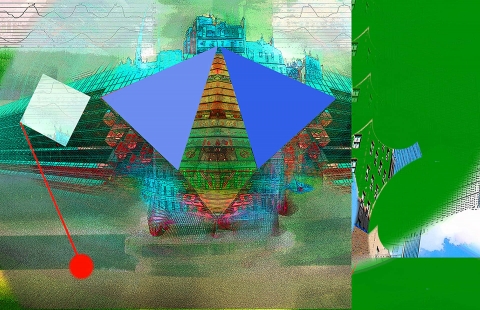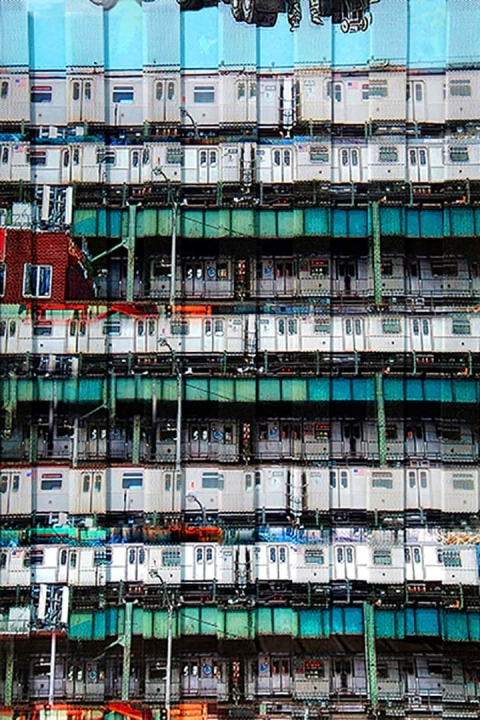
“After a stage of immateriality, the digitised image becomes virtual and this is the exact moment at which it develops an erotic dimension – it is imbued with desire – before adopting a new form. It is clear that the images produced do not emerge ex nihilo, they retain an imprint of a former shape. They perpetuate the architecture of pre-existing forms and referents, even though these have been consigned to oblivion.
They are memories of a primitive virtual reality. By employing non-continuous materials (strips, microperforated grids), the artist disguises as much as he reveals. He interrupts the linear perspective of the gaze and disrupts its trajectory. In addition to its plastic properties of fragmentation and dispersion, the grid acts as a filter which only lets part of the image pass through. By dividing the image up, it randomly selects what is visible, creating surprises and unexpected cuts. By introducing itself between the image and the eye of the viewer, it performs a scanning role which compromises any attempt at realistic identification. It schemes and plots, forcing the viewer to reflect on the meaning of their gaze, on what it conceals and on what it retrieves from the shadows.”
Since the early 2000s, Olivier de Cayron has been developing this approach combining sequencing and images and the use of microperforated sheets (industrial grid), plexiglass, and spacers – to move the microperforated sheet out of alignment with the initial image – thus producing the visual vibration which is essential when creating evolving works.
Excerpt from the Alkent Actuel Art Galerie catalogue. Centre Pompidou Library.
